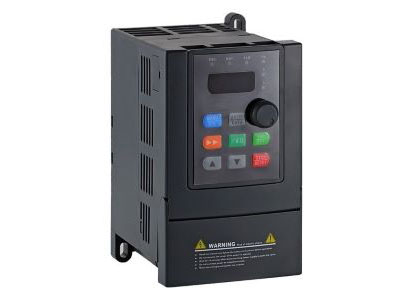Key Takeaway
VFDs are essential in pump systems for several reasons. They allow pumps to adapt to varying operating conditions, such as changes in flow and system head, crucial for precise process control. By adjusting motor speed, VFDs help optimize energy consumption, leading to significant savings in both electrical and mechanical components over the system’s lifetime. Additionally, VFDs contribute to extending the lifespan of pumps by reducing wear and tear associated with frequent starts and stops. This technology not only enhances efficiency but also improves overall system reliability, making VFDs a preferred choice for industries aiming to streamline operations and reduce operational costs.
Role of VFD in Enhancing Pump Efficiency
Variable Frequency Drives (VFDs) are pivotal in optimizing pump efficiency. By adjusting the motor speed to match the required load, VFDs ensure pumps operate at peak efficiency, reducing energy wastage. Traditionally, pumps run at a constant speed, often resulting in excess energy consumption when demand fluctuates. VFDs dynamically alter the pump’s speed, aligning it with real-time needs. This precise control not only maximizes efficiency but also extends the lifespan of the pump. In industrial settings, where energy costs are a significant concern, the efficiency gains from VFDs can lead to substantial financial savings.

Energy Savings Achieved with VFDs in Pumps
One of the most compelling reasons to use Variable Frequency Drives (VFDs) in pumps is the significant energy savings they offer. VFDs adjust the motor speed based on the actual demand, reducing energy consumption, particularly during low-demand periods. In many applications, pumps run at full capacity regardless of the need, leading to wasteful energy use. By precisely matching the energy usage to the actual requirements, VFDs can cut energy costs by up to 50%. This is highly beneficial in energy-intensive industries, where even small efficiency gains can lead to substantial cost reductions. Moreover, VFDs minimize mechanical stress on pump components, extending their operational life and reducing maintenance expenses. Utilizing VFDs in pumps not only optimizes energy usage but also enhances overall system performance and reliability.
You May Like to Read
Improved Control and Flexibility for Pump Operations
VFDs offer significant advantages for pump operations, providing enhanced control and flexibility that are vital in modern industrial processes. They enable precise adjustments to the pump’s speed and torque, ensuring smoother starts and stops. This level of control reduces the risk of water hammer and pressure surges, which can damage the system.
VFDs also bring programmability to the table. Operators can set specific parameters for different scenarios, allowing pumps to adapt to varying operational needs. This flexibility ensures that pumps handle a variety of tasks efficiently, regardless of changing conditions.
In industrial environments where requirements frequently shift, the adaptability provided by VFDs is invaluable. They optimize performance, extend the lifespan of equipment, and contribute to overall system reliability. By using VFDs, you ensure that your pump operations are both efficient and robust, meeting the dynamic demands of modern industrial applications.
Reduction of Mechanical Stress and Wear
Using Variable Frequency Drives (VFDs) in pump systems significantly reduces mechanical stress and wear. Traditional pump systems often experience abrupt starts and stops, causing increased mechanical strain and accelerated wear on components. VFDs solve this by allowing for soft starts and stops. They gradually ramp up and down the motor speed, leading to smoother operation. This gradual acceleration and deceleration minimize the mechanical impact, extending the lifespan of the pump.
In industrial applications, where equipment reliability and longevity are critical, VFDs are invaluable. They help reduce maintenance costs and minimize downtime, ensuring continuous and efficient operation. For engineers, understanding the benefits of VFDs in reducing mechanical stress is essential for optimizing system performance and enhancing equipment durability. Implementing VFDs can significantly improve the operational efficiency and longevity of pump systems, making them a wise investment in industrial settings.
Environmental Benefits of Using VFDs in Pumps
Using VFDs in pumps offers significant environmental benefits. By optimizing energy use, VFDs help reduce the overall carbon footprint of industrial operations. They adjust the motor speed to match the pump’s demand, leading to lower energy consumption. This translates to fewer greenhouse gas emissions, contributing to environmental sustainability. Additionally, VFDs enhance process efficiency, especially in water management systems, by minimizing waste and promoting resource conservation.
For industries dedicated to green practices, VFDs provide a dual advantage. They improve operational efficiency while also supporting environmental responsibility. This alignment with sustainability goals helps companies meet regulatory requirements and demonstrate their commitment to eco-friendly operations. Overall, VFDs in pumps are a crucial component in achieving both economic and environmental benefits, making them indispensable for modern industrial practices.
Conclusion
In conclusion, the use of VFDs in pump applications offers a myriad of benefits that enhance efficiency, control, and sustainability. By adjusting pump speeds to meet real-time demands, VFDs provide significant energy savings, reducing operational costs. Their ability to minimize mechanical stress and extend equipment lifespan translates to lower maintenance expenses and increased reliability. Environmentally, VFDs support sustainability by reducing energy consumption and emissions. For industries seeking to optimize performance while adhering to environmental standards, VFDs are an indispensable tool, offering comprehensive advantages that align with both economic and ecological objectives.
